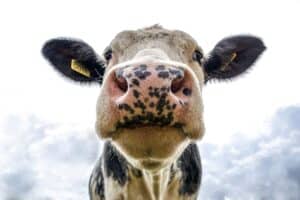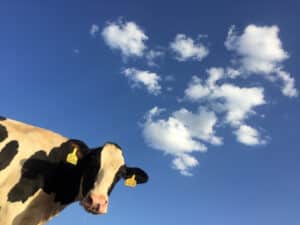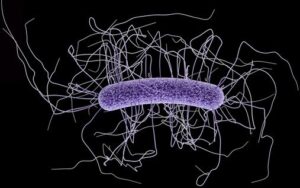Bobbi Bailey, PhD
As we are harvesting our crops, most of us are probably not thinking about mycotoxins and their potential risks. It is often thought that mycotoxins do not present a significant risk to beef cattle because they can break down the mycotoxins in the rumen. Although beef cattle do have the ability to break down mycotoxins, the amount that can be broken down is limited and the detoxification process can result in the production of new, more toxic compounds making the problem worse. Also, if higher levels of mycotoxins are present or if there are substantial amounts of complex mixtures of mycotoxins, the animal’s system will not be able to break them down. Mycotoxins can be formed on crops in the field, during harvest, storage, processing or feeding and can affect cattle health, performance and profitability. There are over 300 known mycotoxins, however those of greatest concern in cattle include: aflatoxin, deoxynivalenol (DON), zearalenone, T-2 toxin, fumonisin and ochratoxin. Another non-traditional mycotoxin that has become more common in the last several years is Ergot. It is the primary cause of fescue toxicosis, however, it can be found in other cool season forages such as rye, wheat, brome and triticale.
Although these mycotoxins can cause serious health issues, most of the time their impacts are on rumen function, gut integrity and immune response which manifests in decreased production. Therefore, producers may not be aware that there is a mycotoxin issue. Overall, mycotoxin effects on health and production include decreased dry matter intake, slower growth rates, poor conception rates, reduced longevity, increased disease susceptibility as well as a significant impact on rumen function and gut health. Calves are at a greater risk to mycotoxin challenges as they are less mature and more sensitive to the mycotoxins. This can also be exacerbated by the stress level and health status of the calves during weaning, shipping and receiving. The ability to defend against these challenges depends primarily upon gut health because about 70 percent of the calf’s immune system is located in the gut. A compromised gut can lower the immune response thereby lowering the calf’s ability to defend against opportunistic health challenges. Diet is also a factor. When cattle are fed higher levels of grain, rumen pH is decreased and the rumen’s ability to break down mycotoxins is reduced. When the rumen’s ability to detoxify toxins is impaired, it is then the animal’s liver that is being affected and needs to convert toxins into something benign that can be excreted. If the animal is no longer able to detoxify these products, this can lead to oxidative stress. Dealing with oxidative stress requires more energy from the animal that could otherwise be used for milk production, growth, longevity, fertility and overall animal productivity.
Preventing or alleviating exposure to and ingestion of mycotoxins always begins with good management. However, even the best management cannot overcome weather and growing conditions. If a mycotoxin issue is suspected, testing of feed samples should be the first action taken. This will identify the mycotoxin(s) that are causing the problem and in which feedstuff(s). Next, if possible, eliminate or dilute the source of the mycotoxin and/or use a product to alleviate the mycotoxin challenge. Novin S is a well-researched product containing plant-based ingredients that have proven liver protective qualities as well as polyphenols to help counteract oxidative stress not only from mycotoxins, but also the stress of high production. Also, Novin S contains fermentation extracts that help maintain immune and rumen function, cellulolytic activity, and proper rumen protozoal numbers to keep rumen performance steady as well as maintaining the ability to fight some of the mycotoxin challenge naturally. Lastly, clays and polymers are added as a flow agent to provide a complete package. By adding Novin S to a diet, you are providing your cattle with insurance against a mycotoxin challenge by supporting rumen, liver, renal, immune, and reproductive health.



